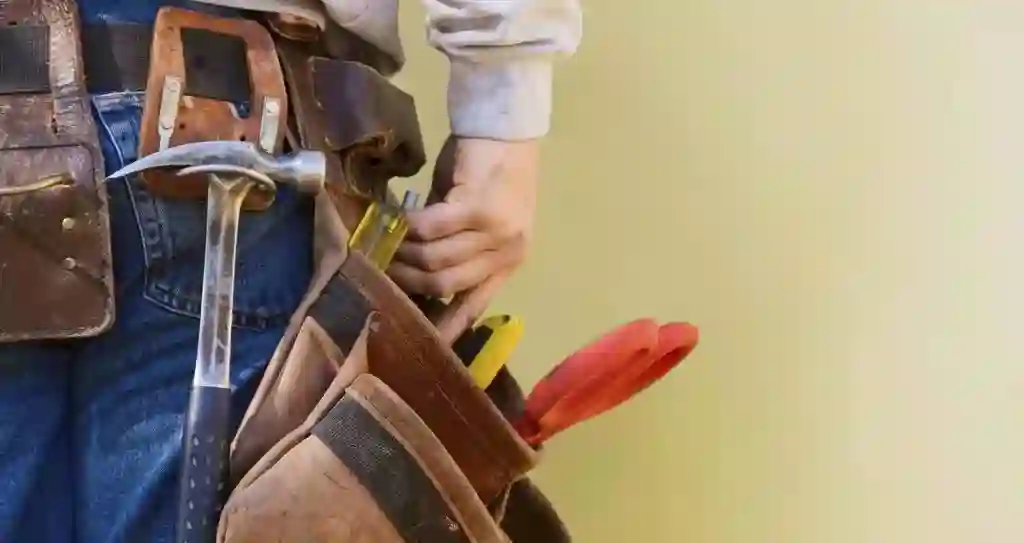
The Handyman’s Toolbox: Essential Equipment for Home Fixes
Every homeowner, regardless of their DIY proficiency, should have a well-equipped toolbox at their disposal. A reliable set of tools not only empowers you to tackle common home repairs but also saves you time and money by eliminating the need to call in professionals for minor fixes. Whether you’re a seasoned DIY enthusiast or just starting on your home improvement journey, understanding the essential tools for your toolbox is crucial. In this guide, we’ll explore the must-have equipment for any homeowner, ensuring that you’re well-prepared for a wide range of home fixes and maintenance tasks.
- Screwdrivers: A set of screwdrivers is a fundamental component of any toolbox. Opt for both flathead and Phillips-head screwdrivers in various sizes to handle different types of screws commonly found in furniture, appliances, and fixtures.
- Hammer: A versatile tool that can be used for everything from driving in nails to removing them. A claw hammer with a curved end is perfect for these tasks.
- Adjustable Wrench: Also known as a crescent wrench, this tool can be adjusted to fit various nut and bolt sizes. It’s indispensable for plumbing tasks and tightening or loosening fasteners.
- Pliers: Pliers come in various types, including slip-joint pliers, needle-nose pliers, and tongue-and-groove pliers. They are essential for gripping, bending, and cutting wires, pipes, and other materials.
- Tape Measure: A tape measure is invaluable for measuring distances accurately, whether you’re planning furniture placement or taking dimensions for a home improvement project.
- Utility Knife: A retractable utility knife with a sharp blade is indispensable for cutting materials such as cardboard, drywall, insulation, and plastic packaging.
- Level: Ensure your pictures hang straight and your shelves are level with a bubble level. It’s also handy for checking the flatness of surfaces during DIY projects.
- Saw: A basic hand saw is helpful for cutting wood, plastic, and other materials when you don’t have access to power tools. Choose a saw with fine teeth for smoother cuts.
- Flashlight: You never know when you’ll need to inspect a dark corner or work on a project during a power outage. A durable flashlight is a must for every toolbox.
- Safety Gear: Don’t forget to include essential safety gear such as safety goggles, ear protection, and work gloves to protect yourself while working on various tasks.
- Cordless Drill: A cordless drill is a versatile power tool that can drive screws, drill holes, and perform a wide range of tasks. Make sure it comes with a set of drill bits and screwdriver bits.
- Plunger: Essential for every homeowner, a plunger is a tool you hope you won’t need often, but when you do, it’s indispensable for clearing clogged drains and toilets.
- Caulking Gun: A caulking gun is essential for sealing gaps and cracks around windows, doors, and fixtures to prevent drafts and water intrusion.
- Stud Finder: When hanging heavy objects like shelves or mirrors, a stud finder helps you locate the solid wood studs behind your walls for secure mounting.
- Pipe Wrench: If you have plumbing tasks on your to-do list, a pipe wrench is essential for tightening or loosening threaded pipes and fittings.
- Allen Wrench Set: Also known as hex keys, an Allen wrench set is vital for assembling furniture and tightening small hexagonal screws and bolts.
- Electrical Tester: A non-contact voltage tester allows you to check for the presence of electrical current and identify live wires without direct contact, ensuring safety during electrical work.
- Hacksaw: A hacksaw is excellent for cutting metal pipes, rods, or brackets, making it a valuable tool for plumbing and metalwork projects.
- Chisels: Chisels come in handy for woodworking tasks, trimming door edges, or removing excess wood from mortises and tenons.
- Bucket or Tool Bag: Keeping your tools organized and easily transportable is essential. A sturdy bucket or tool bag helps you carry your equipment from one task to another.
- Duct Tape and Electrical Tape: These tapes have multiple uses, from temporary fixes to securing loose cords, making them valuable additions to your toolbox.
- Nail Set: A nail set is used to sink nails below the surface of wood, allowing for a smooth finish when patching or painting.
- Carpenter’s Square: Also known as a framing square, this tool helps ensure that your angles are precise when cutting or assembling materials.
- Hole Saw Kit: When you need to create large holes in wood, drywall, or other materials, a hole saw kit with various sizes is indispensable.
- Pipe Cutter: If you have plumbing projects, a pipe cutter makes clean, precise cuts on copper, PVC, or other types of pipes.
- Fire Extinguisher: Safety should always be a priority. Keep a small fire extinguisher in your toolbox or nearby for emergencies.
- Lubricant and WD-40: Lubricants can help loosen rusty or stuck components, making it easier to tackle various tasks.
- Small Hardware Assortment: Stock up on screws, nails, anchors, and other small hardware items commonly needed for repairs and DIY projects.
- Paintbrushes and Rollers: Even if you’re not a professional painter, having a set of paintbrushes and rollers is useful for touch-ups and small painting tasks.
- Sandpaper: Various grits of sandpaper are essential for smoothing surfaces, removing paint, and preparing materials for finishing.
Conclusion
A well-stocked toolbox is the hallmark of a prepared homeowner. Whether you’re facing a minor repair or undertaking a significant DIY project, having the right tools at your disposal can make the difference between success and frustration. By investing in the essential equipment listed above, you’ll be equipped to handle a wide range of home fixes and improvements, ensuring that your home remains a comfortable and well-maintained space for you and your family. So, start building your toolbox today, and you’ll be ready to take on any home-related challenge that comes your way.